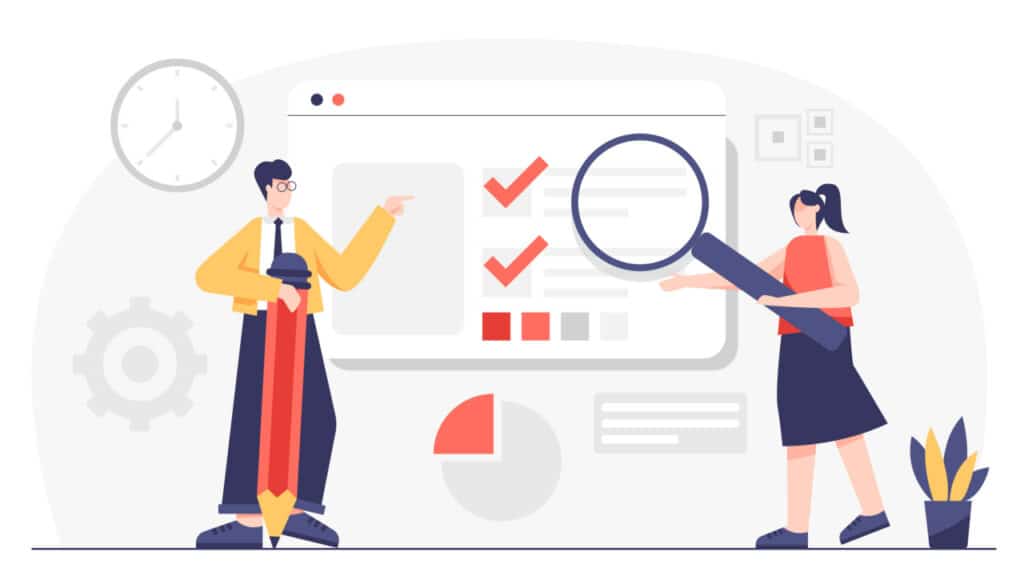Are you running an e-commerce website or working as an SEO agency striving to optimize your clients’ online stores?
If so, you already understand the importance of having a solid SEO strategy. But have you considered the power of a well-structured internal linking plan? Internal linking, when done right, can significantly improve your website’s search engine rankings and user experience, driving more traffic and increasing sales.
In this comprehensive guide, we’ll dive deep into various internal linking strategies specifically tailored for e-commerce websites, helping you unlock your site’s full potential or provide outstanding results for your clients.
Let’s get started!

Why Internal Linking Matters for E-commerce Websites
Internal linking plays a crucial role in optimizing e-commerce websites for search engines and enhancing the overall user experience. By implementing a robust internal linking strategy, e-commerce websites can reap several specific benefits:
- Improved Indexation and Site Crawlability: A well-structured internal linking system allows search engines to crawl and index your website’s pages more efficiently. This is particularly important for e-commerce websites with a large number of products and categories, as it ensures that search engines can discover and index all relevant pages, increasing their visibility in search results.
- Higher Search Rankings: Internal links help distribute link equity (the value passed from one page to another through links) across your e-commerce site, boosting the authority of individual pages. This can lead to higher search engine rankings for important product and category pages, driving more organic traffic to your online store.
- Enhanced User Experience and Navigation: Strategic internal linking makes it easier for users to navigate your e-commerce website and discover relevant products or content. This not only improves user satisfaction but also increases the likelihood of users making a purchase or becoming repeat customers.
- Increased Conversions and Sales: Internal linking can help promote related products, upsell, and cross-sell opportunities, encouraging users to explore more of your offerings and ultimately make a purchase. By effectively guiding users through the buyer’s journey, you can increase conversion rates and boost sales.
- Lower Bounce Rates: By providing users with relevant internal links, you can keep them engaged and reduce the likelihood of them leaving your site prematurely. A lower bounce rate signals to search engines that your e-commerce site offers valuable content, which can further improve your search rankings.
By tailoring an internal linking strategy to the unique demands and characteristics of e-commerce websites, you can significantly elevate your site’s SEO performance, user experience, and overall effectiveness.
By doing so, you’ll drive increased traffic, boost sales, and pave the way for long-term success in the highly competitive world of online retail. A well-planned internal linking approach ensures that your e-commerce site not only meets the expectations of search engines but also delights and engages your customers, turning casual visitors into loyal, satisfied shoppers.
Top Internal Linking Strategies for E-commerce Websites

1. Strategic Placement of Links
Homepage Links
Your homepage is the most important and most visited page on your site. Make sure to include links to your key product categories and top-selling products, as well as any promotions or special offers. For example, Amazon effectively highlights its key product categories and top deals on its homepage.
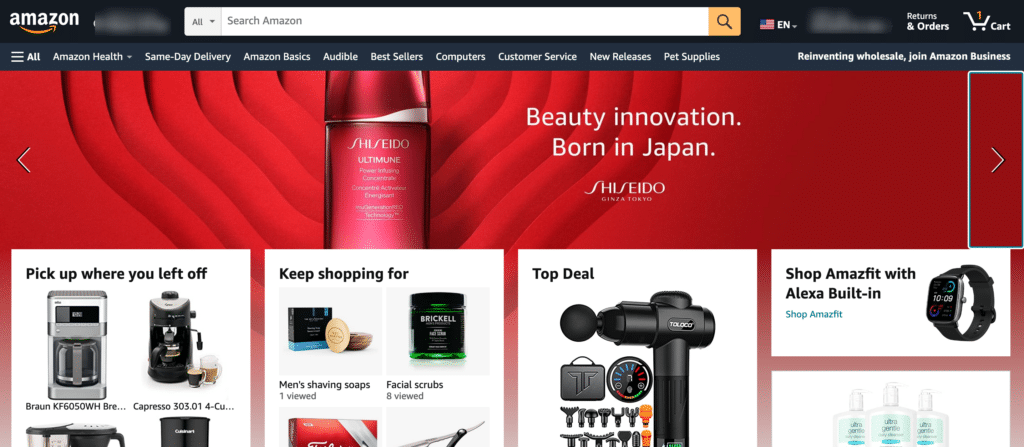
Navigation Menu Links
The navigation menu is another critical area for internal linking. Organize your menu by product categories and subcategories, and include links to important pages like your shopping cart, customer support, and account management. Zappos has a clear and user-friendly navigation menu that makes it easy for users to browse different product categories and access key pages.
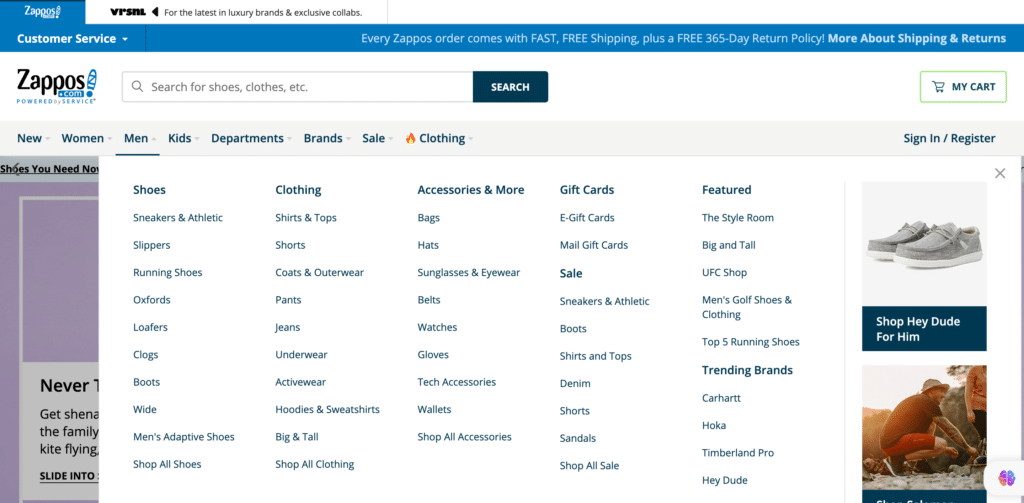
Breadcrumbs
Breadcrumbs are a series of links that show users their current location within your site’s hierarchy. They help users understand your site’s structure and provide a quick way to navigate back to previous pages. Best Buy utilizes breadcrumbs effectively to guide users through its site structure.
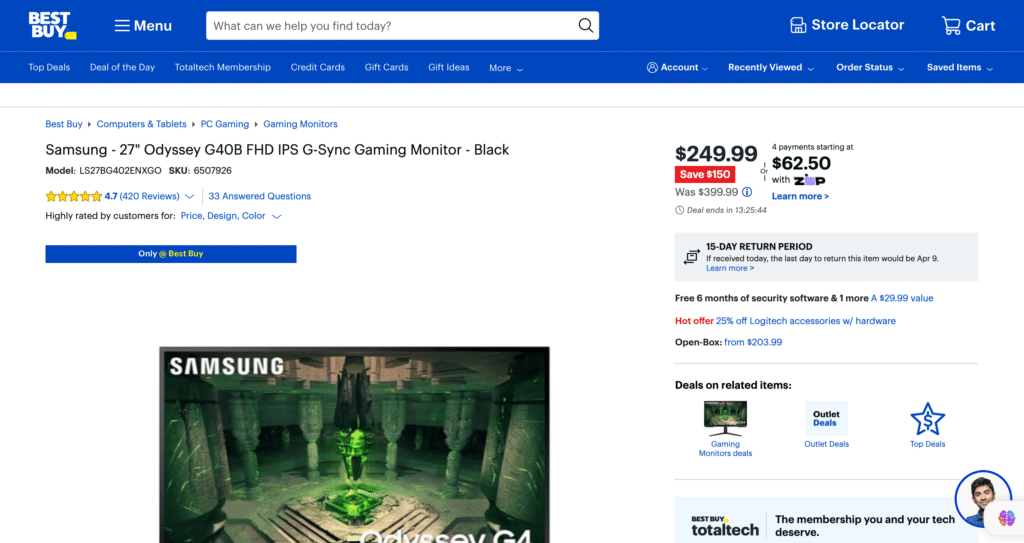
2. Product Recommendations
Related Products
Showcasing related products on product pages is a great way to keep users engaged and increase the chances of cross-selling. Make sure to link to products that are complementary or within the same product category. IKEA does an excellent job of displaying related products on its product pages.
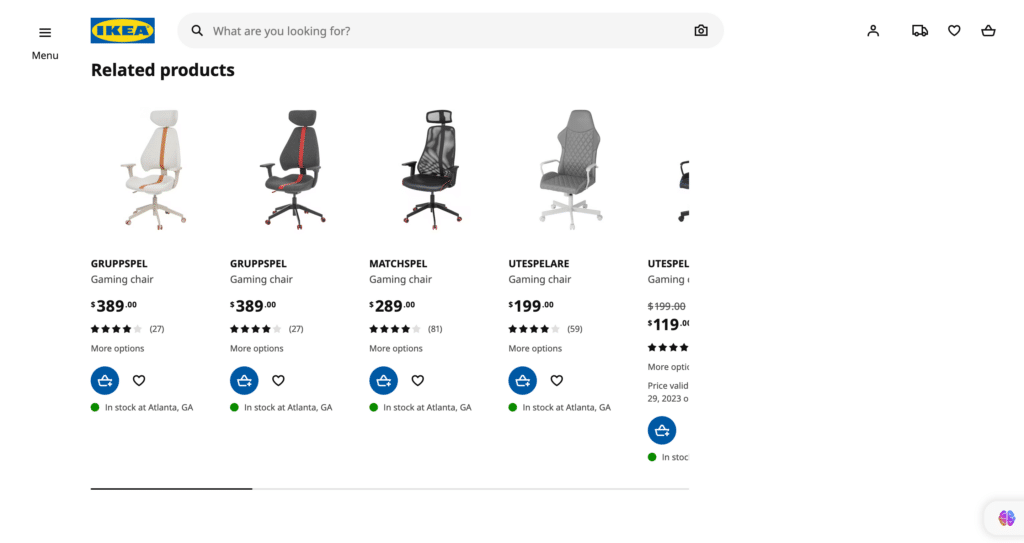
Upselling and Cross-selling
Promote higher-priced items or complementary products by linking to them from product pages or during the checkout process. This can help increase your average order value.
Apple is known for its effective upselling and cross-selling strategies, like offering higher-capacity devices or additional accessories during the checkout process.

3. Blog Content and Resource Pages
Linking to Product Pages
If you have a blog or resource pages, make sure to include internal links to your product pages. This can help drive traffic and sales, while also providing valuable information to your users. For example, REI often includes links to relevant products within its blog content.
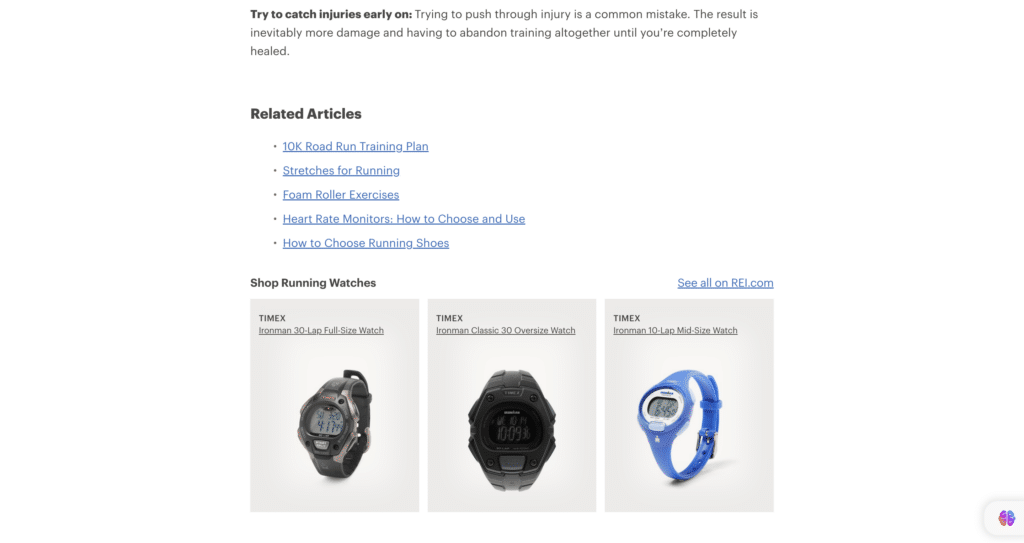
Linking to Category Pages
In addition to linking to individual product pages, include internal links to relevant category pages within your blog content. This can help users explore other products within the same category.
Walmart.com includes links to category pages in its search results page, allowing users to easily navigate to different sections of the site. For example, if a user searches for “laundry detergent,” Walmart.com includes links to the “Laundry Detergent” category page at the top of the search results.

4. Utilize Anchor Text Effectively
When creating internal links, it’s important to use descriptive anchor text that clearly indicates the content of the linked page. This not only helps users understand what to expect when they click the link but also provides context for search engines, which can improve your SEO.
For example, instead of using generic anchor text like “click here” or “learn more,” use specific and relevant phrases like “shop our latest collection of sneakers” or “discover the benefits of our premium skincare line.”
5. Monitor and Optimize Your Internal Linking Structure
Regularly reviewing and optimizing your internal linking structure is essential for maintaining a user-friendly and SEO-friendly e-commerce website. Use tools like Google Analytics, Google Search Console, and specialized SEO tools to monitor your internal links’ performance, identify broken links, and discover opportunities for improvement.
Keep an eye on the following:
- User engagement metrics, such as time spent on the page, bounce rate, and click-through rate
- The number of indexed pages in search engines
- The distribution of internal link equity (how link value is spread across your site)
Use this data to make informed decisions and adjustments to your internal linking strategy, ensuring that it remains effective and up-to-date.
6. Don’t Overdo Internal Linking

While internal linking is crucial for your e-commerce website, it’s important not to go overboard. Excessive internal linking can make your content difficult to read and may even hurt your SEO efforts. As a rule of thumb, only include internal links when they add value for your users and support your site’s overall structure.

7. Prioritize Mobile-Friendly Internal Linking
With more and more people using mobile devices to shop online, it’s essential to prioritize mobile-friendly internal linking. Make sure your internal links are easily clickable on mobile devices, and consider using responsive design to adapt your site’s layout and content for smaller screens.
This will help ensure a seamless and enjoyable user experience, regardless of the device your visitors are using.
8. Use Pagination and “Load More” Techniques Wisely
When dealing with large product categories or extensive blog content, you may need to use pagination or “load more” techniques to break the content into manageable chunks. When implementing these techniques, ensure that your internal links are still crawlable and accessible to both users and search engines.
For example, when using “load more” buttons, consider implementing infinite scrolling with a progressive loading technique that allows search engine bots to crawl and index the content effectively.
9. Link to Recently Viewed Products
By including links to users’ recently viewed products, you can make it easier for them to navigate back to items that caught their attention. This can help increase the likelihood of users returning to those products and potentially making a purchase.
10. Promote Seasonal and Time-sensitive Offers
Use internal linking to highlight seasonal or time-sensitive offers and promotions. By creating dedicated pages for these promotions and linking to them from your homepage, product pages, or blog content, you can drive traffic and create a sense of urgency that encourages users to take advantage of the deals.
Example: Create a dedicated “Black Friday Deals” page during the holiday season and link to it from your homepage, product pages, or blog content.
11. Leverage User-generated Content

User-generated content (UGC), such as customer reviews, testimonials, or social media posts, can be an excellent source of internal linking opportunities. By linking to products mentioned in UGC, you can create a more engaging and interactive experience for your users and leverage the power of social proof to drive sales.
For example, you could create a “shop the look” section on your site that links to products featured in user-submitted photos or display customer reviews on product pages with links to the reviewed items.
12. Regularly Update Internal Links for Discontinued or Out-of-stock Products
Monitor your inventory and update internal links for products that are discontinued or out of stock. When a product is no longer available, redirect the internal links to a similar or related product, or to an appropriate category page.
This helps maintain a seamless user experience and ensures that your internal linking structure remains relevant and up-to-date.
Example: If a popular smartphone model is discontinued, redirect internal links pointing to that product page to a newer smartphone model or an appropriate category page.
13. Use Internal Linking Tools and Plugins
There are various tools and plugins available to help you manage and optimize your internal linking structure more effectively. Some popular options include:
- Screaming Frog: This SEO spider tool allows you to crawl your website and identify internal linking opportunities, broken links, and other on-site issues.
- Ahrefs: Ahrefs provides a comprehensive suite of SEO tools, including a site audit feature that can help you analyze and optimize your internal linking structure.
- Yoast SEO: This popular WordPress plugin offers an internal linking feature that suggests relevant content to link to while you’re creating or editing your website’s content.
- Linkilo: Install a powerful internal linking tool like Linkilo on your WordPress-based e-commerce site to receive automatic internal linking suggestions and boost your website’s SEO. With features like automatic keyword analysis and link suggestions, Linkilo makes optimizing your internal linking structure easier than ever, freeing up time for you to focus on other aspects of your online business.

14. Implement Silo Structure for Internal Linking
A silo structure is an organized approach to internal linking where you group related pages together and interlink them in a hierarchical manner. This structure helps search engines understand the relationship between your website’s pages and can improve your site’s overall SEO. To implement a silo structure:
- Organize your content into categories and subcategories.
- Interlink pages within the same category or subcategory, rather than linking to unrelated pages.
- Create cornerstone content for each category, and link to these pages from other related pages within the same category.
Example: Organize your e-commerce site’s content into categories like “Electronics,” “Home & Kitchen,” and “Fashion,” and then create subcategories within these categories. Interlink pages within the same category or subcategory to establish a clear hierarchy.
15. Consider the Use of NoFollow and NoIndex Tags Wisely
Using nofollow and noindex tags can help you manage your internal linking structure and guide search engines when crawling and indexing your site. However, use these tags cautiously and strategically.
- Use nofollow tags for internal links to pages that aren’t important for SEO, such as login, terms and conditions, or privacy policy pages. This helps direct search engines to focus on your more valuable content.
- Use noindex tags for pages that you don’t want to appear in search results, such as duplicate or low-quality content.
Example: Add a nofollow tag to internal links pointing to your “Login” page, since search engines can’t even login to a page. Hence, not needed to be there.
Here’s more information from Matt Cutts video:
16. Analyze Competitor Internal Linking Strategies
Researching and analyzing your competitors’ internal linking strategies can provide valuable insights and ideas for optimizing your own website.
Use tools like Ahrefs or SEMrush to examine the internal linking structures of successful e-commerce websites in your niche, and identify patterns or techniques that could benefit your own site.
17. Use Visual Cues to Enhance Internal Linking
Incorporate visual elements, such as icons, buttons, or thumbnails, to make your internal links more engaging and noticeable. This can not only improve the click-through rate but also enhance the overall user experience. For example, use eye-catching “Shop Now” buttons or display product images alongside links to product pages.
18. Optimize Anchor Text Distribution
Vary your anchor text to create a natural and diverse internal linking profile. Using the same anchor text repeatedly may appear unnatural and potentially harm your SEO efforts. Instead, use a mix of exact-match, partial-match, and branded anchor text to maintain a healthy and balanced internal linking structure.
Example: Vary your anchor text when linking to a specific product page by using exact-match (e.g., “Canon EOS Rebel T7i”), partial-match (e.g., “Canon DSLR camera”), and branded (e.g., “our top-selling camera”) anchor text.
19. Interlink Your Most Important Pages Strategically
Identify your most important pages, such as top-selling products, high-converting landing pages, or valuable resources, and prioritize interlinking them with other related pages on your site. This can help boost the visibility and authority of these pages, driving more traffic and increasing the chances of conversion.
20. Balance Deep and Shallow Links
Ensure a balance between deep and shallow links in your internal linking structure. While it’s essential to link to your main product categories and top-level pages, don’t forget to include links to deeper pages, such as specific products, blog posts, or resource pages. This can help distribute link equity throughout your site and improve the discoverability of your content.
Example: In a blog post about photography tips, include links to top-level category pages, such as “Cameras” or “Lenses,” as well as deeper pages, like specific camera models or lens types. This ensures a balanced distribution of internal links throughout your e-commerce site.
21. Consistency and Continuous Improvement

Maintaining a consistent internal linking structure and continuously updating it as your website grows is crucial for long-term success. Regularly review your internal linking strategy, and make adjustments as needed to accommodate new products, categories, or content.
For example. after adding new products or categories to your e-commerce site, review and update your internal linking structure to ensure that the new pages are properly interlinked with existing content.
Stay up-to-date with SEO best practices and adjust your internal linking strategy accordingly to maintain optimal performance.
Conclusion
Let’s quickly recap the key takeaways from this comprehensive guide on internal linking strategies for e-commerce websites:
- Understand the importance of internal linking for e-commerce websites, including improved indexation, higher search rankings, enhanced user experience, increased conversions, and lower bounce rates.
- Implement a variety of internal linking techniques, such as linking to related products, using breadcrumbs, incorporating blog content, balancing deep and shallow links, and creating a silo structure.
- Utilize tools and plugins, like Linkilo, to optimize and manage your internal linking strategy more effectively.
- Continuously review and update your internal linking practices, staying informed about the latest SEO trends and best practices to ensure your website’s ongoing success.
Ready to elevate your WordPress e-commerce website’s internal linking strategy and unlock its full potential? Give Linkilo a try! Linkilo is a powerful WordPress internal linking tool that makes optimizing and managing your website’s internal linking structure easier than ever.
By automating the process and offering valuable insights and suggestions, Linkilo can help you save time and achieve outstanding results for your online store. Don’t miss out on the opportunity to improve your site’s SEO, user experience, and overall performance.
Try Linkilo today and experience the difference a well-structured internal linking plan can make for your e-commerce success!


